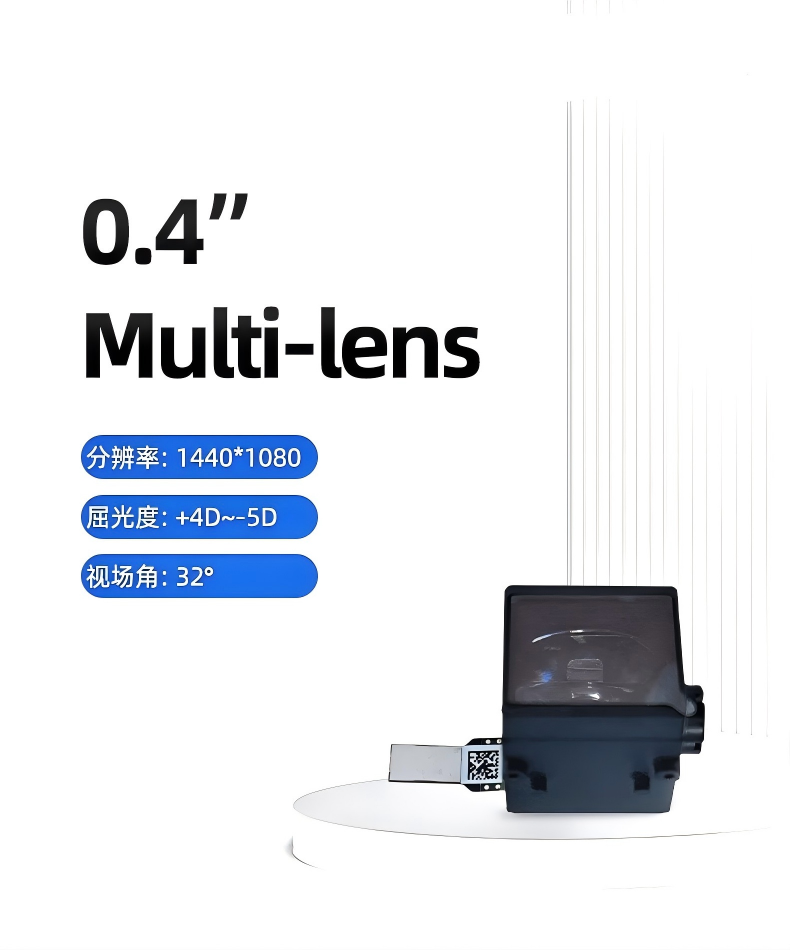Product Details
0.4-inch HD EVF Electronic Viewfinder Type-C Solution
1440×1080 resolution display suitable for industrial equipment,
medical instruments, and telescopes. Features high PPI and low
latency performance.
Product Overview
0.4-inch EVF Electronic Viewfinder with Type-C plug-and-play
solution offering industrial-grade stability and medical-grade HD
quality. Specially adapted for telescope applications.
A: Product Parameter
| Display Technology | AR display |
| Size | 0.4 Inch |
| Resolution | 1440×1080 |
| Interface | MIPI |
| Field of view angle | 32° |
| Color gamut performance | 90% D0-P3 |
| Testing Board | HDMI and Type C optional |
| Part No. | ESHXSY040WDG01 |
| Display Technology | Si-OLED |
B:Product Picture
C:Drawing and Pin Definition
D: Oled Product Knowledge
OLED Advantages:
OLED sets are lighter and thinner than LCDs , high contrast, high
color saturation, lower consumption
OLED Disadvantages
AMOLED is extremely expensive than LCD and TFT, lifetime is shorter
than LCD and TFT
E: Company Information
Huaxin Advantage:
1. factory base located at inland city which has cost effective
2. most advanced new equipment which can keep quality stable
3. most processes using fully automatic equipment which has
effeciency and stable quality
4. professional engineers and production leaders who works in lcd
field for more than 20 years
5. self design for customized product
our certificates
1.ISO14001/
2.ISO9001/IATF16949
3.SGS of LCD module
- Huaxin Technology (Enshi)Co.,LTD
- Hubei.Enshi
- Date of foundation:2009
- high technology enterprise mainly work on research and development,
producing and sells LCD,LCM,TFT,backlight,OLED
- LCD includes: VA,TN, HTN, STN, FSTN, CSTN and other series
- LCM includes: COB,TBA, COG,TP,LED backlight and other series
- register capital:twenty million
- current staff:500+
- RD accounts for 10%
- QC accounts for 15%
F: Production Capacity
Annual Production
Capacity | 2021 (Current) | 2022 (Goal) | 2023 (Challenge) | 2024 (Challenge) | 2025 (Challenge) | Remark |
LCD Producton
Capacity | 4.5 | 9 | 9 | 9 | 9 | Unit:thousands of
logarithms/Day |
LCM Producton
Capacity | 70 | 150 | 300 | 450 | 450 | Unit:Thousand
piece/Day |
Backlight Producton
Capacity | 100 | 200 | 300 | 500 | 500 | Unit:Thousand
piece/Day |
OLED Producton
Capacity | 10 | 20 | 30 | 40 | 50 | Unit:Thousand
piece/Day |
G: Product Application
1.safety box &instrument
2.lock&smart home
3.transmitter&watch
4.watch&adio
5.collimator&navigator
H: AMOLED Display Characteristics
1.Self-E missive Pixels:
2.Contrast Ratio:
3.Color Accuracy and Vibrancy:
4.Viewing Angles:
5.Power Efficiency:
6.Thinness and Flexibility:
7.Response Time:
I:How does the power efficiency of AMOLED displays compare to other
display technologies?
1.Power Consumption:
- AMOLED displays consume power on a per-pixel basis, meaning that
pixels that display black or dark content consume very little
power, while pixels displaying bright or white content consume more
power.
- LCD and LED displays, on the other hand, require a constant
backlight that consumes power regardless of the displayed content.
2.Content Dependency:
- AMOLED displays are more power-efficient for content with a lot of
dark or black areas, as the individual pixels can be turned off to
save power.
- LCD and LED displays consume a relatively constant amount of power
regardless of the displayed content, as the backlight remains
active.
3.Brightness Control:
- AMOLED displays can dynamically adjust the brightness of individual
pixels, allowing for better power efficiency in low-brightness
scenarios.
- LCD and LED displays typically have a fixed backlight brightness,
which can result in higher power consumption even when the display
content does not require maximum brightness
4.Display Size
- AMOLED displays tend to be more power-efficient for smaller display
sizes, as the power consumption scales with the number of pixels.
- Larger LCD and LED displays may require more power-hungry
backlights, potentially reducing their power efficiency compared to
AMOLED displays of the same size.


